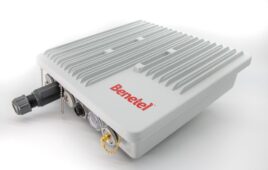SAN FRANCISCO (AP) — Big tech companies are competing to help you pay for a store purchase with your phone. Here are some options:
Apple Pay:
How it works: Apple Pay lets you pay by placing an iPhone 6 or 6 Plus, or Apple Watch, next to a store device equipped for near-field communication (NFC) signals. You authorize the transaction with your fingerprint. For security, Apple Pay uses a “tokenization” method that replaces your credit or bank account number with an encrypted code and generates a second code for each transaction. The service works with most bank cards; it’s adding Discover and store cards this fall.
Where it works: Apple says it will be accepted at 1 million locations by next month. Most are chains, although some independent stores have NFC readers as well. A few chains like Wal-Mart are resisting Apple Pay while an industry group works on an alternative. Apple Pay also works with many online sites and apps.
Android Pay:
How it works: Google struggled to win traction for its old app, Wallet, but it’s struck deals with major banks, retail chains and wireless carriers to support a new service called Android Pay. It will use “tokenization” and work much like Apple Pay. Android Pay will be available for any smartphone with an NFC chip and Android software known as KitKat, Lollipop or the upcoming M. For older phones without fingerprint readers, it will require a PIN to authorize transactions.
Where it works: Google says the new Android Pay will be accepted at 700,000 retail locations to start, including many of the same chains that accept Apple Pay, and even some vending machines with NFC readers. It will work with major payment cards, including Discover, merchant rewards programs, online sites and apps — but not store credit cards initially.
Samsung Pay:
How it works: Samsung plans its own payment service for new Galaxy S6 smartphones later this year. Like Apple Pay and Android Pay, the Samsung service will use the phone’s fingerprint reader and transmit digital “tokens” instead of account numbers, for security.
Where it works: Samsung Pay promises to work at millions of stores, regardless of whether they have an NFC terminal. New Samsung phones will have an NFC chip and a separate technology that communicates with older store devices that read the magnetic stripe on a standard credit or debit card.
PayPal:
How it works: PayPal is working on a variety of mobile payment technologies. Its smartphone app shows a list of participating stores near you. Once there, you swipe your screen to “check in” after making a purchase or ordering food. In some cases, the app sends a wireless notification to the store, where a clerk completes the transaction and charges your PayPal account. Other stores may require you to type a PIN into their check-out device, or show a bar code that appears on your phone screen.
Where it works: PayPal is accepted by a number of online sites and independent retail stores, but only a few major chains such as Home Depot, Foot Locker, Autozone and Toys R Us.




